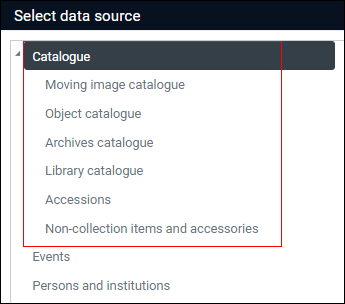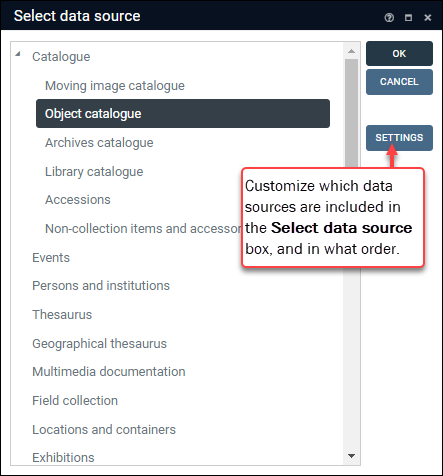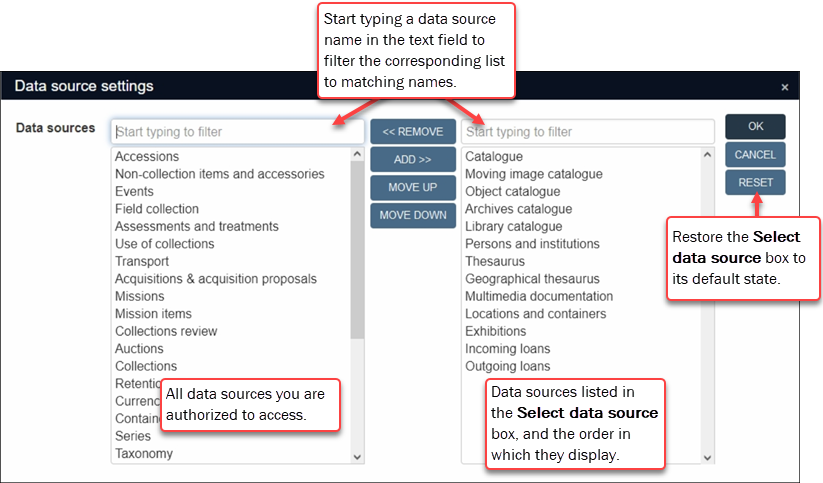The Select data source box
The Select data source box displays when New or Search is selected in the Main menu and by default all data sources![]() The management of a collection can involve a vast amount of information about objects / items / books, people and organizations, events, administration and more. This information is stored as records in data sources. Each data source stores a specific type of information: details about collection items, people, events, loans, and so on. a user is authorized to work with are listed. As the list can be long and some data sources may rarely if ever be accessed it is possible for each user to control which data sources are listed, and in what order1. Here we see the Select data source box when Search is selected:
The management of a collection can involve a vast amount of information about objects / items / books, people and organizations, events, administration and more. This information is stored as records in data sources. Each data source stores a specific type of information: details about collection items, people, events, loans, and so on. a user is authorized to work with are listed. As the list can be long and some data sources may rarely if ever be accessed it is possible for each user to control which data sources are listed, and in what order1. Here we see the Select data source box when Search is selected:
A user's changes are stored in their user profile and are persistent until changed again.
To customize the Select data source box:
-
Click the Settings button to open the Data source settings box:
The column on the left lists all data sources you are authorized to access; the column on the right lists the data sources that are included in the Select data source box in the order in which they display.
To include a data source in the Select data source box:
-
Double-click a data source name in the left column to move it to the right column
-OR-
-
Select a data source name in the left column and click Add.
To remove a data source from the Select data source box:
-
Double-click a data source name in the right column to move it to the left column
-OR-
-
Select a data source name in the right column and click Remove.
Tip: Start typing a data source name in the text field above a column to filter the list to matching names.
To change the order in which data sources are listed in the Select data source box:
-
Select a data source label in the right column.
-
Click Move up or Move down to reposition it.
While it is possible to move a sub data source (Object catalogue for instance) outside of its parent data source (Catalogue in this case), it can be useful to keep such data sources together as a visual reminder about which data sources will be searched when a parent data source is selected: for example, when a search is run in the Catalogue in this example, the search will run across all highlighted data sources:

Note: Removing a sub data source from the Select data source box does not remove it from Collections. If Accessions was removed in the example above and a search was run in Catalogue, the search would run across all of the Catalogue's sub data sources, including Accessions.
-
It is possible to restore the Select data source box to its default state by clicking the Reset button.



